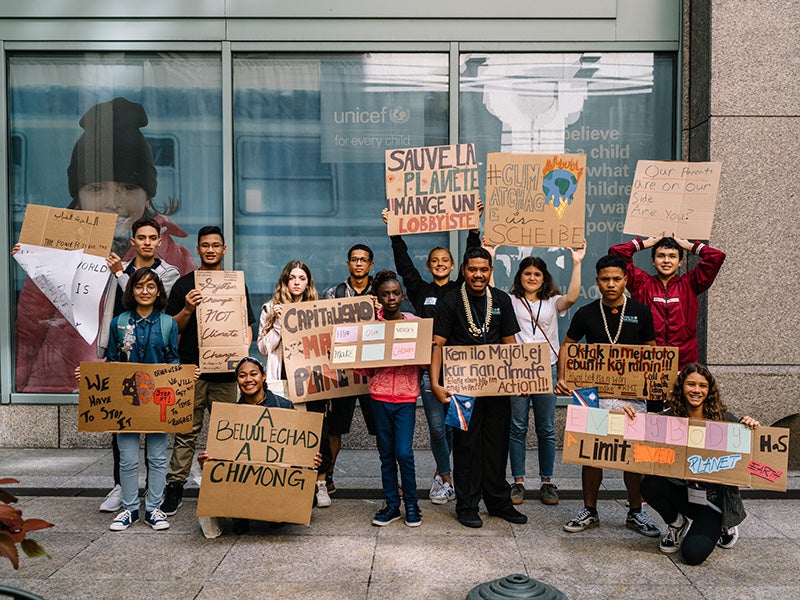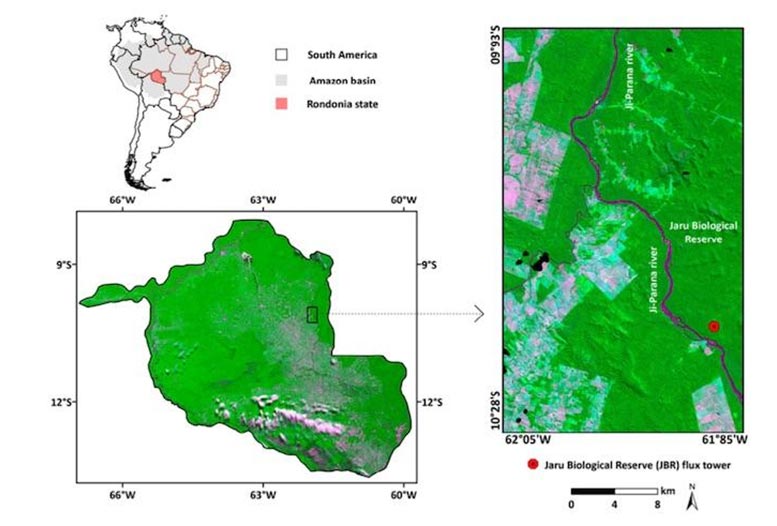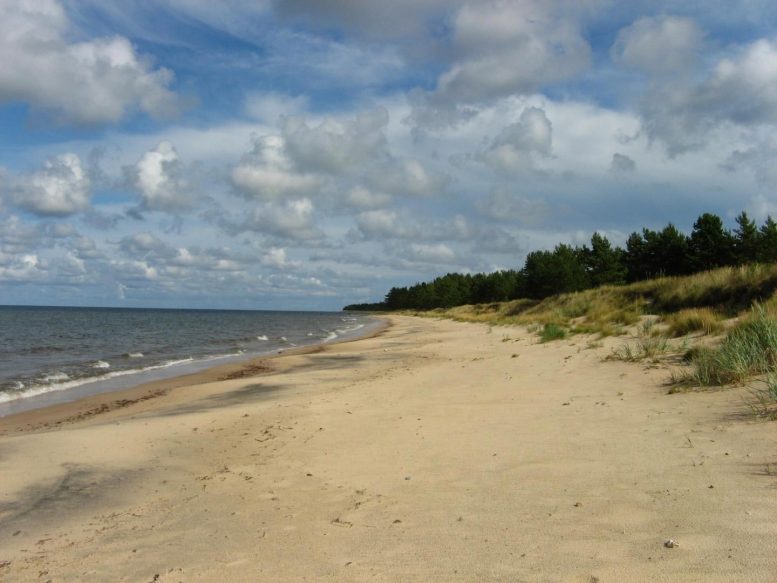#NatureNow, a new short film narrated by Greta Thunberg and political journalist, author and activist George Monbiot, serves as a call to action to protect, restore and fund #NaturalClimateSolutions. Credits: Tom Mustill/ www.grippingfilms.com
(97) A #NatureNow message from Greta Thunberg. - YouTube
Following what goes on with oil and gas exploitation in and around Adrian, Michigan since 2013 - and how these events in our little city connect to the global environmental situation... - with the occasional sidetrack to other related environmental issues in Lenawee county, Michigan and how those relate to global issues.
Thursday, September 26, 2019
(95) WATCH: Greta Thunberg's full speech to world leaders at UN Climate Action Summit - YouTube
Swedish climate activist Greta Thunberg chastised world leaders Monday, Sep. 23, for failing younger generations by not taking sufficient steps to stop climate change. "You have stolen my childhood and my dreams with your empty words," Thunberg said at the United Nations Climate Action Summit in New York. "You're failing us, but young people are starting to understand your betrayal. The eyes of all future generations are upon you. And if you choose to fail us, I say we will never forgive you," she added. Thunberg traveled to the U.S. by sailboat last month so she could appear at the summit. She and other youth activists led international climate strikes on Friday in an attempt to garner awareness ahead of the UN's meeting of political and business leaders.
(95) WATCH: Greta Thunberg's full speech to world leaders at UN Climate Action Summit - YouTube
(95) WATCH: Greta Thunberg's full speech to world leaders at UN Climate Action Summit - YouTube
16 Young People File UN Human Rights Complaint on Climate Change | Earthjustice
Youth petitioners take fight for global climate change action to the United Nations Committee on the Rights of the Child
SEPTEMBER 23, 2019
New York, NY — Today, 16 young people from around the world submitted a groundbreaking legal complaint about climate change with the United Nations Committee on the Rights of the Child. Their petition shows how five regional leaders and G20 members — Respondents Argentina, Brazil, France, Germany, and Turkey — have known about the risks of climate change for decades. Despite that knowledge, they are failing to curb emissions, while continuing to promote fossil fuels. The climate crisis was caused and is being perpetuated by the actions and inactions of all states, but without the leadership of the respondents, the global effort to solve the climate crisis cannot succeed.
The youth petitioners are between the ages of eight and 17 and hail from Argentina, Brazil, France, Germany, India, Palau, Marshall Islands, Nigeria, South Africa, Sweden, Tunisia, and the United States. Among the petitioners is Greta Thunberg, a Swedish student climate activist, who sparked a global youth climate action movement through her Fridays for Future school strikes in 2018. Greta is joined by Alexandria Villaseñor, a fellow American activist who co-founded the U.S. Youth Climate Strike. Alexandria, inspired by Greta, conducted her own Friday climate protests outside of the New York United Nations headquarters. The other petitioners are devoted activists and educators in their own right in their home countries.

In making their complaint, the authors narrate the impact climate change has had on their own lives, including brushes with death and loss of neighbors from wildfire or flooding; threats to traditional ways of life such as reindeer herding or fishing; significant health hazards such as dengue fever, malaria, and asthma; hardships from drought, air quality, and poisoned marine life; and mental anxiety or depression about the present and future.
Continue reading at: 16 Young People File UN Human Rights Complaint on Climate Change | Earthjustice
SEPTEMBER 23, 2019
New York, NY — Today, 16 young people from around the world submitted a groundbreaking legal complaint about climate change with the United Nations Committee on the Rights of the Child. Their petition shows how five regional leaders and G20 members — Respondents Argentina, Brazil, France, Germany, and Turkey — have known about the risks of climate change for decades. Despite that knowledge, they are failing to curb emissions, while continuing to promote fossil fuels. The climate crisis was caused and is being perpetuated by the actions and inactions of all states, but without the leadership of the respondents, the global effort to solve the climate crisis cannot succeed.
The youth petitioners are between the ages of eight and 17 and hail from Argentina, Brazil, France, Germany, India, Palau, Marshall Islands, Nigeria, South Africa, Sweden, Tunisia, and the United States. Among the petitioners is Greta Thunberg, a Swedish student climate activist, who sparked a global youth climate action movement through her Fridays for Future school strikes in 2018. Greta is joined by Alexandria Villaseñor, a fellow American activist who co-founded the U.S. Youth Climate Strike. Alexandria, inspired by Greta, conducted her own Friday climate protests outside of the New York United Nations headquarters. The other petitioners are devoted activists and educators in their own right in their home countries.

Youth petitioners display their signs before marching in the Sept. 20 Global Climate Strike in New York City.
In making their complaint, the authors narrate the impact climate change has had on their own lives, including brushes with death and loss of neighbors from wildfire or flooding; threats to traditional ways of life such as reindeer herding or fishing; significant health hazards such as dengue fever, malaria, and asthma; hardships from drought, air quality, and poisoned marine life; and mental anxiety or depression about the present and future.
Continue reading at: 16 Young People File UN Human Rights Complaint on Climate Change | Earthjustice
Friday, September 20, 2019
Deeper Insight Into 2019 Fires From Satellite Study of Amazon Rainforest
Throughout August and early September 2019, media around the world have reported on the extensive forest fires ravaging Brazil’s Amazon rainforest. Much of the concern stems from the Amazon’s significance to regulating the world’s climate. According to the Associated Press, the Amazon absorbs 2 billion tons of carbon dioxide every year — about 5% of global emissions. Thus, fires in the region eat away at this carbon-absorbing capacity while at the same time adding carbon to the air through burning.

A recent study in the peer-reviewed journal Ecohydrology headed by University of Kansas researcher Gabriel de Oliveira gives important context to the fires burning big swaths of the Amazon today, most of which were set intentionally by farmers and ranchers to convert forest into land suitable for grazing animals or growing crops. The researchers sought to discover how these changes to land cover affect the exchange of water and heat between the surface of the Amazon and the atmosphere overhead.
Continue reading at: Deeper Insight Into 2019 Fires From Satellite Study of Amazon Rainforest

This map shows the study area and location of the flux tower used.
A recent study in the peer-reviewed journal Ecohydrology headed by University of Kansas researcher Gabriel de Oliveira gives important context to the fires burning big swaths of the Amazon today, most of which were set intentionally by farmers and ranchers to convert forest into land suitable for grazing animals or growing crops. The researchers sought to discover how these changes to land cover affect the exchange of water and heat between the surface of the Amazon and the atmosphere overhead.
Continue reading at: Deeper Insight Into 2019 Fires From Satellite Study of Amazon Rainforest
Climate Strike in my Hometown Freiburg, Germany
I am so proud of the young people in my hometown Freiburg, Germany
Fridays for Future Freiburg @F4F_Freiburg
30,000 on the streets in a city with a population of 230,000. Freiburg stressed clearly: "We have enough from the climate cabaret (#Klimakabarett der GroKo)! Our future is non-negotiable.
Fridays for Future Freiburg @F4F_Freiburg
30,000 on the streets in a city with a population of 230,000. Freiburg stressed clearly: "We have enough from the climate cabaret (#Klimakabarett der GroKo)! Our future is non-negotiable.
#Freiburg is breathtaking! We probably hit a record here :D #GlobalClimateStrike #FridaysForFurture #Klimastreik pic.twitter.com/k3iKKHgAdR— Fridays for Future Freiburg (@F4F_Freiburg) September 20, 2019
EPA Silent As Dicamba Drift Rages On | Pesticide Action Network
I am reading Rachel Carson's "Silent Spring" published in my year of birth 1962 and it sounds like she is writing about what is going on today. "When will they ever learn?".
Each year since Monsanto’s dicamba-resistant Xtend seeds have hit the market, farmers and rural communities have braced for record levels of pesticide drift. Even with this year’s late start to planting season, 2019 may see the highest number of dicamba drift incidents yet.
Long before Xtendimax was approved, dicamba was well-known as a particularly volatile chemical - it simply does not stay where it is put, no matter how it is applied. Early advocates warned of the damage this herbicide can and would do to off-target organisms.
Bayer, however, refuses to accept that its new star pesticide is a problem. Instead, the company is taking a page out of the “deny, deny, deny” corporate playbook, while blaming applicators for applying the product incorrectly.
From its inception, the Xtend crop system was bound to be a divisive disaster for all kinds of farmers. Herbicide resistance is just another instance of Monsanto (now Bayer) promising a short-sighted “solution” to a problem of its own creation. While farmers who don’t use the Xtend system are hit with dicamba drift, crop damage, and yield loss, Bayer is reaping the financial gains of an increase in acreage planted to dicamba-resistant soybeans.

Continue reading at: EPA Silent As Dicamba Drift Rages On | Pesticide Action Network
Each year since Monsanto’s dicamba-resistant Xtend seeds have hit the market, farmers and rural communities have braced for record levels of pesticide drift. Even with this year’s late start to planting season, 2019 may see the highest number of dicamba drift incidents yet.
Long before Xtendimax was approved, dicamba was well-known as a particularly volatile chemical - it simply does not stay where it is put, no matter how it is applied. Early advocates warned of the damage this herbicide can and would do to off-target organisms.
Bayer, however, refuses to accept that its new star pesticide is a problem. Instead, the company is taking a page out of the “deny, deny, deny” corporate playbook, while blaming applicators for applying the product incorrectly.
From its inception, the Xtend crop system was bound to be a divisive disaster for all kinds of farmers. Herbicide resistance is just another instance of Monsanto (now Bayer) promising a short-sighted “solution” to a problem of its own creation. While farmers who don’t use the Xtend system are hit with dicamba drift, crop damage, and yield loss, Bayer is reaping the financial gains of an increase in acreage planted to dicamba-resistant soybeans.

Continue reading at: EPA Silent As Dicamba Drift Rages On | Pesticide Action Network
Wednesday, September 18, 2019
Due to Climate Change the Landscapes We Are Familiar With Are Disappearing
Agnes Anderson, doctoral student of the School of Natural Sciences and Health of Tallinn University, recently defended her doctoral dissertation, in which she explores how the changing climate and human influence change the aeolian coastal dune landscapes. The dissertation concluded that the coastal dune landscapes are losing their distinctive features and diversity due to those influences.
The most dynamic, fragile, and attractive part of the coastal zone is characterized by the aeolian coastal dune landscapes, which extend over a 200 km² area in Estonia. Their formation is mostly determined by climate, sediments, and vegetation, which affect the movement of sand and the formation of dunes.

Due to Climate Change the Landscapes We Are Familiar With Are Disappearing
The most dynamic, fragile, and attractive part of the coastal zone is characterized by the aeolian coastal dune landscapes, which extend over a 200 km² area in Estonia. Their formation is mostly determined by climate, sediments, and vegetation, which affect the movement of sand and the formation of dunes.

This is Lõimastu beach in Estonia. Credit: Tallinn University
Due to Climate Change the Landscapes We Are Familiar With Are Disappearing
Subscribe to:
Posts (Atom)

